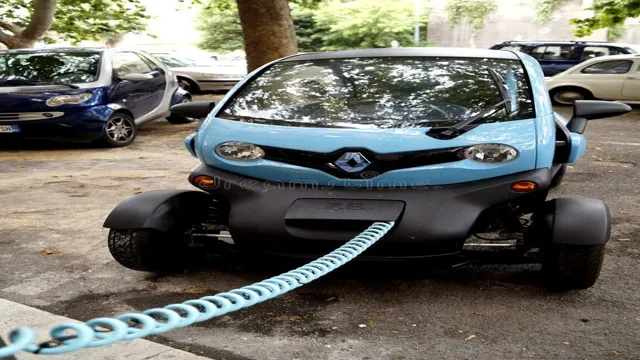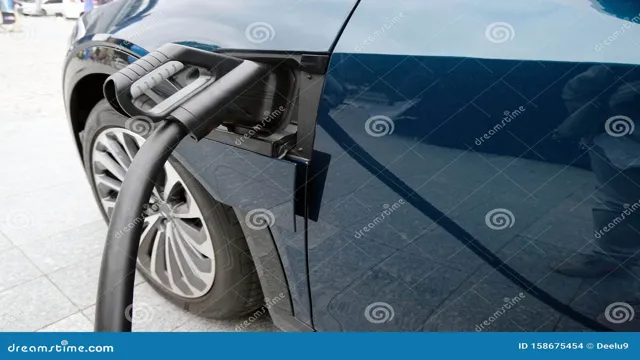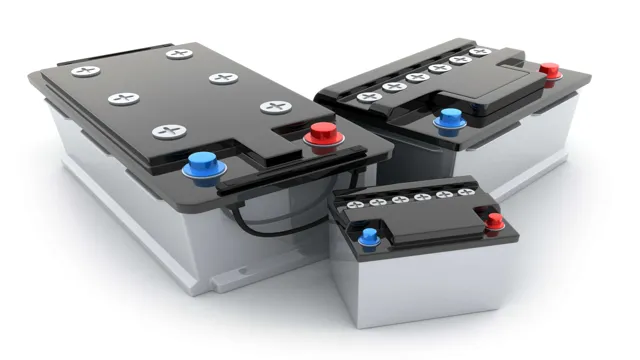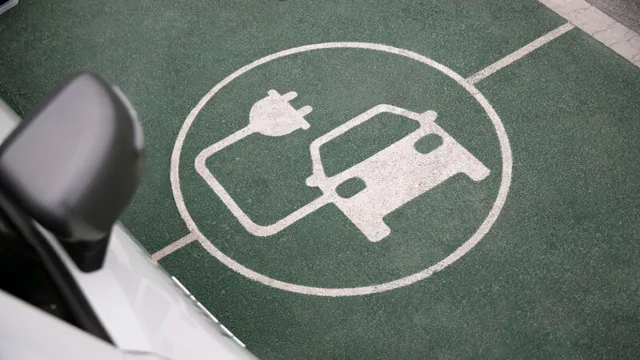Rev Up Your Ride: The Ultimate Guide to Charging Your Electric Car Battery
Electric cars have been increasing in popularity among consumers for several years now. While the idea of owning a vehicle that does not require fossil fuels may seem enticing, many people still don’t know what charging an electric car involves. How do you go about charging your electric vehicle? Do you need to install a special outlet or charging station in your home? In this blog post, we will explore the various ways you can charge your electric car and provide helpful tips for making the process smoother and more efficient.
So, if you’re a new electric car owner or simply curious about electric cars, keep on reading!
Charging Basics
If you’re new to owning an electric car, then you might have some questions about charging your battery. The process is relatively simple, and there are a few basics that you need to know. First, it’s important to understand that charging an electric vehicle (EV) is different from filling up a gas tank.
With an EV, you’ll need to plug your car into a charging station, and the battery will slowly charge over time. How quickly it charges will depend on a few factors, such as the type of charger and the battery’s current level. You’ll also need to choose the right charging station for your car, as there are different connectors for different types of EVs.
It’s worth noting that many public charging stations are free, while others may require payment. Lastly, you’ll need to monitor your battery’s level and plan your charging around your daily routine to avoid running out of power unexpectedly. Overall, charging an electric car is a simple process, but it’s important to understand the basics to ensure you always have enough battery life to get where you need to go.
Understanding Charging Levels
Charging your electric vehicle (EV) can be a confusing process, especially when trying to figure out the various charging levels. Simply put, charging levels indicate how quickly an EV can charge based on the voltage and amperage of the charging station. Level 1 charging is the slowest method, as it uses a standard 120V household outlet and typically takes several hours to fully charge an EV.
Level 2 charging is faster, using a 240V charging station and taking a few hours to fully charge. Finally, Level 3, or DC fast charging, is the quickest method, allowing for an 80% charge in as little as 30 minutes. Understanding the charging levels is important when planning trips or deciding on a charging infrastructure for your EV.
Keep in mind that not all EVs are compatible with all charging levels, so it’s important to check your vehicle’s manual before attempting to charge.

Charging Times and Cost
When it comes to charging an electric vehicle, it can be confusing to understand the different options available and how long it takes to charge. The charging time and cost will vary depending on the type of charger you use and the size of your vehicle’s battery. Generally, Level 1 charging, which uses a standard electrical outlet, can take up to 20 hours to fully charge an electric car.
Level 2 charging, which requires a dedicated charging station, can take around 4-6 hours. Meanwhile, the fastest option is Level 3 charging, also known as DC fast charging, which can charge up to 80% in approximately 30 minutes. It’s important to note that the cost of charging will also vary based on your location and the pricing structure of the charging station.
Some charging stations offer free charging, while others may charge a flat rate or per kilowatt-hour. Overall, understanding the basic charging options can help you determine which option is best for your lifestyle and needs.
Charging at Home
Charging your battery electric car at home is not only cost-effective, but it’s also convenient. The process is quite simple, just plug your car into a power outlet and let it charge overnight. However, it’s important to note that not all outlets can handle the power required to charge your vehicle.
It’s best to have a dedicated outlet installed specifically for charging your car. This will prevent any potential damage to your home’s electrical wiring. In addition, it’s recommended to have a level 2 charger installed.
This type of charger will charge your car much faster than a regular outlet, providing you with more convenience and flexibility. Charging your car at home is a great way to ensure you always have a full charge and are ready to go whenever you need to.
Installing a Home Charger
If you’re an electric car owner, installing a home charger is a game-changer for your daily driving routine. Not only does it save you time by eliminating trips to public charging stations, but it also provides added convenience because you can charge your car overnight or whenever it’s not in use. To get started, you’ll need to choose the type of charger you need based on your car’s make and model.
You can opt for a Level 1 charger for slower charging, or a Level 2 charger for faster charging. Once you have your charger, you’ll need to find a suitable location to install it, preferably near your car’s parking spot and near a power source. The installation process involves running wiring from the charger to your electrical panel and mounting the charger on a wall, post, or pedestal.
It’s important to hire a licensed electrician for the job to ensure safety and proper installation. With your new home charger in place, you’ll enjoy the convenience and peace of mind knowing that you always have a fully charged car at your disposal.
Managing Energy Usage
If you’re an electric vehicle owner, charging at home is one of the most convenient and cost-effective ways to manage your energy usage. All you need is access to a power outlet or charging station in your garage or driveway. With a home charging station, you can easily recharge your EV overnight, during off-peak hours when electricity rates are typically lower.
This not only saves you money on your energy bill but also helps alleviate strain on the power grid during peak demand periods. Plus, charging at home means less time spent driving to and waiting at public charging stations. It’s like having a personal fuel station right at your doorstep! So, why not invest in a home charging station and enjoy the convenience and cost-saving benefits of managing your energy usage?
Charging On the Road
When it comes to electric cars, one of the biggest concerns for drivers is the issue of charging. After all, no one wants to be stranded on the side of the road with a dead battery. Fortunately, there are plenty of options when it comes to charging battery electric cars.
While most people opt to charge their cars at home overnight, there are also a growing number of charging stations available on the road. These can be found at rest stops, shopping centers, and even along highways. Charging times can vary depending on the type of charger, so it’s important to plan ahead and know where you can find the fastest charging options.
With a little bit of research and planning, charging your electric car on the go can be easy and stress-free.
Finding Charging Stations
As electric vehicles become increasingly popular, finding charging stations on the road is becoming less of a headache. There are now various apps and websites available to help drivers locate charging stations, with information on location, type of charging available, and even availability in real-time. Some of the most popular apps includes PlugShare, ChargePoint, and Electrify America.
Additionally, many car manufacturers offer their own navigation systems that include a charging station locator tool. While charging on the road may take longer than a quick fill-up at a gas station, many charging stations are located in prime spots for grabbing a bite to eat or running errands. Plus, the environmentally-friendly aspect of electric vehicles is definitely worth the wait.
So next time you hit the road in your electric vehicle, just remember that finding a charging station is easier than ever!
Planning Longer Trips
If you’re planning a longer road trip, one of the biggest concerns you may have is how to charge your electric vehicle on the go. Fortunately, there are several options available to keep your car battery topped up when you’re on the road. One option is to use public charging stations, which can generally be found at rest areas, shopping centers, and other public locations.
Another option is to use a portable charger, which allows you to charge your car’s battery from a standard electrical outlet. If you’re going on a longer road trip, however, you may want to consider investing in a dedicated EV charging station for your home, so you can fully charge your car before you hit the road. This will ensure that you have enough power to reach your destination without having to rely too heavily on public charging stations or portable chargers.
Whatever option you choose, just be sure to plan ahead and have a charging strategy in place before you hit the road.
Charging Etiquette
Charging etiquette is an important topic for anyone who owns or drives a battery electric car. As electric vehicles become more popular and widespread, it’s important to be courteous and considerate when it comes to charging. One key aspect of charging etiquette is to always leave a charging station when you’re finished charging.
It may be tempting to continue using the station when you don’t need to, but it can cause frustration and inconvenience for other EV drivers who need to charge. Another important aspect is to be mindful of how long you’re using a charging station. Instead of hogging the station for hours on end, try to limit your charging time to what you need and then move on.
By following these simple guidelines, we can all do our part to ensure that charging stations are available and accessible for everyone.
Sharing Public Charging Stations
Charging Etiquette for Sharing Public Charging Stations When it comes to sharing public charging stations, the key to a smooth and stress-free experience is charging etiquette. It’s important to be mindful of other EV drivers and considerate of their needs, as well as your own. One of the most basic rules of charging etiquette is to only occupy the charging station for the length of time you need.
Once your EV is fully charged, move it so that another driver can use the space. Another important rule is to charge only when you need it. Don’t hog the charging station for long periods of time, just to “top off” your battery or park your car for extended periods.
While it’s important to prioritize the needs of other drivers, it’s also important to be prepared with the right equipment. Bring your own charger and cable and be sure to park your vehicle within reach of the charging station. By following these simple rules, you can help create a positive and efficient charging experience for everyone.
Tips for Efficient Charging
Charging your electronic devices in public can be a bit of a tricky situation. You may not always be certain which outlet belongs to which charging station or how long you should leave your device plugged in. As a general rule of thumb, it’s important to be mindful of other people’s needs and to keep track of your own devices while they’re charging.
Don’t hog an outlet if others are waiting to use it, and don’t leave your device charging for longer than necessary if the battery is already full. Think of it like taking a parking spot: you wouldn’t want to park your car in a prime spot for hours on end, taking away the opportunity for someone else to use it. Follow these charging etiquette tips to ensure a harmonious experience for all!
Conclusion
In conclusion, charging a battery electric car is like refueling your vehicle with creativity and ingenuity. Just like a writer needs a fully charged battery for their laptop to compose a masterpiece, an electric car needs a fully charged battery to take you where you need to go. So let’s charge up those batteries and hit the road, ready to discover what the future of transportation has in store for us!”
FAQs
How long does it take to fully charge an electric car battery?
The time it takes to fully charge an electric car battery depends on the size of the battery and the charging station used. A Level 1 charger can take up to 30 hours for a full charge, while a Level 2 charger can take around 4-8 hours. DC fast charging can provide up to 80% charge in 30-40 minutes.
Can I charge my electric car battery at home?
Yes, electric car batteries can be charged at home using a Level 1 or Level 2 charger. Level 1 chargers can be plugged into a standard wall outlet, while Level 2 chargers require a dedicated circuit and professional installation.
How much does it cost to charge an electric car battery?
The cost of charging an electric car battery varies depending on the electricity rate and the size of the battery. On average, it costs around $10-$15 to fully charge an electric car battery. However, some charging stations may offer free charging or reduced rates during off-peak hours.
Can I charge my electric car battery using solar panels?
Yes, it is possible to charge an electric car battery using solar panels. A solar panel system can be installed at home or at a charging station to provide renewable energy for electric vehicles. However, it may require a large number of solar panels to fully charge a battery, and the cost of installation can be expensive.






